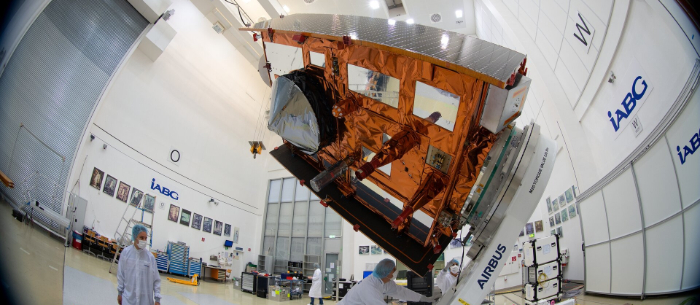The European Space Agency (ESA) has completed testing of the latest Copernicus Sentinel-6 ‘Michael Freilich’ sea level-charting satellite, meaning it is ready for shipment to its US launch site, where it will sit atop a SpaceX Falcon-9 booster.
Renamed in honor of Michael H. Freilich, who led NASA’s work in Earth science, Copernicus Sentinel-6 Michael Freilich will assume the critical role of monitoring sea level change by extending the long-term measurement record of global mean sea level from space.
The agency noted that over the last three decades, the French–US Topex-Poseidon and Jason missions served as reference missions, and in combination with ESA’s earlier ERS and Envisat satellites, as well as today’s CryoSat and Copernicus Sentinel-3, they have shown how sea level has risen about 3.2mm on average a year. It stated that it is now time for the Copernicus Sentinel-6 mission to pick up the baton and extend a data set that is considered the ‘gold standard’ for climate studies.
Pierrik Vuilleumier, ESA’s Copernicus Sentinel-6 project manager, said, “This review is an important milestone and the plan now is to have the satellite packed up by the end of the month for shipment from IABG’s center near Munich in Germany to the Vandenberg launch site in California in the USA. Given the Covid-19 situation, all those involved have worked brilliantly to keep to schedule. We plan to ship to Vandenberg on September 23, following a few other reviews related to the readiness of the launch site and spacecraft operations.”
Each Sentinel satellite carries a radar altimeter that, combined with precise satellite location data and altimetry measurements, yields the height of the sea’s surface. The satellite’s instrument package also includes an advanced microwave radiometer that accounts for the amount of water vapor in atmosphere, which affects the speed of the altimeter’s radar pulses.



